28. August 2024
Introducing the Workforce Pulse Report
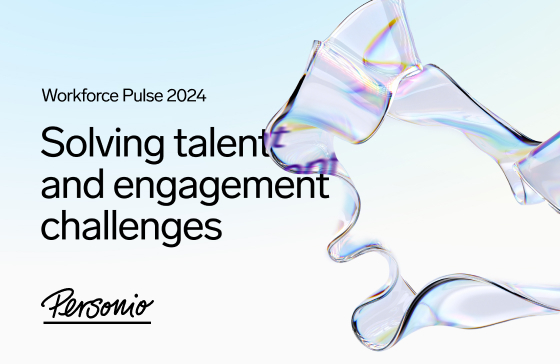
The workforce is undergoing a seismic shift. Talent shortages are a continued thorn in the side of hiring teams, employee expectations are evolving rapidly, and the traditional model of work is being redefined.
This perfect storm is forcing organisations to rethink their strategies for attracting, retaining and engaging top talent.
In the first edition of our new annual report, the Workforce Pulse, we surveyed 7,000 employees and 3,500 employers (HR decision-makers) across Europe to evaluate the most pressing people challenges and evolving workforce trends.
Then, we spoke to experts in the world of work to gather actionable, practical advice for HR teams responding to these trends.
Read on to dive into six top takeaways from the 2024 Workforce Pulse Report. For an in-depth look at the challenges on the horizon — and how organisations can turn them into opportunities for unlocking productivity and fostering a thriving workforce — download the full report.
We may be on course for the ‘Great Resignation 2.0’
The data suggests that we could see a repeat of the post-Covid “Great Resignation”, with a wave of people moving jobs once they and employers feel more optimistic about the economy. 48% of employees are planning to look for a new job in the next 12 months, and 44% of employees will feel more motivated to leave their job when the economy improves.
With this in mind, it’s more important than ever for employers to focus not just on recruitment and retention, but also on how they can engage and motivate their people — as a means to safeguard their top talent, and boost productivity in the process.
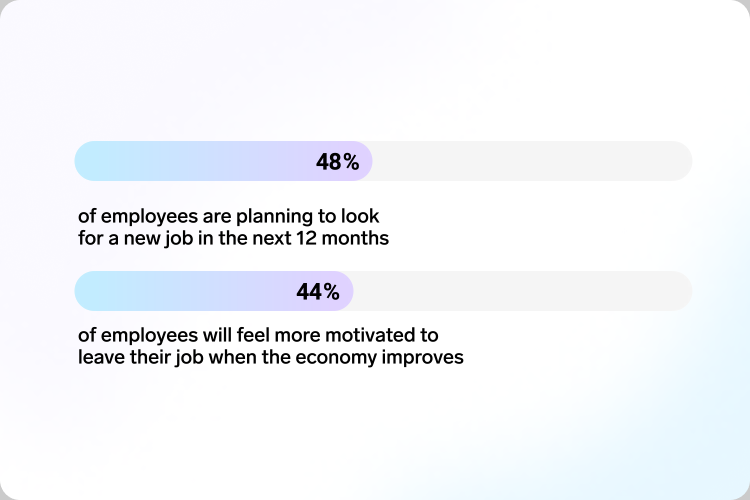
We’re in a low spot for employee engagement
Employee engagement is an essential element of any retention strategy, and improving it helps to reduce turnover.
But now is a bad time for employee engagement in Europe. Over a fifth (22%) of employers say engagement has been low over the past 12 months. And an eyebrow-raising 60% say it has deteriorated over the past year.
This creates a clear imperative for organisations to understand what drives engagement (or lack thereof) in your business. Run employee surveys to get a wider picture, and focus groups or one-on-one discussions to get qualitative feedback to enrich those findings, building a holistic picture of how you can increase employee engagement.
There’s a trust gap in many organisations
High levels of trust go hand in hand with a good company culture and happy employees — but with today’s employees now expecting more from leadership when it comes to transparency, fairness and respect, trust can be hard to win and easy to lose. Just a fifth of employees trust their CEO (21%) or senior leadership team (20%) to a great extent.
Critically, the data reveals a mismatch between how employers and employees view trust and psychological safety — with employers much more optimistic than employees.

With high levels of trust going hand-in-hand with high levels of motivation and productivity, finding out whether this is an issue for your organisation and what’s driving it is essential. The causes will likely vary from organisation to organisation, and even from team to team, so gathering data by talking to your people is a must.
Building trust takes time — you have to go one piece at a time. But communicating well will help you get there.
‘Squiggly careers’ are the new norm
While almost four in 10 (39%) European employees say that they work in their dream job or industry, around an equal number (40%) want to switch to working in a new career or industry. A third (33%) would even take a lower salary for a more interesting or engaging job.
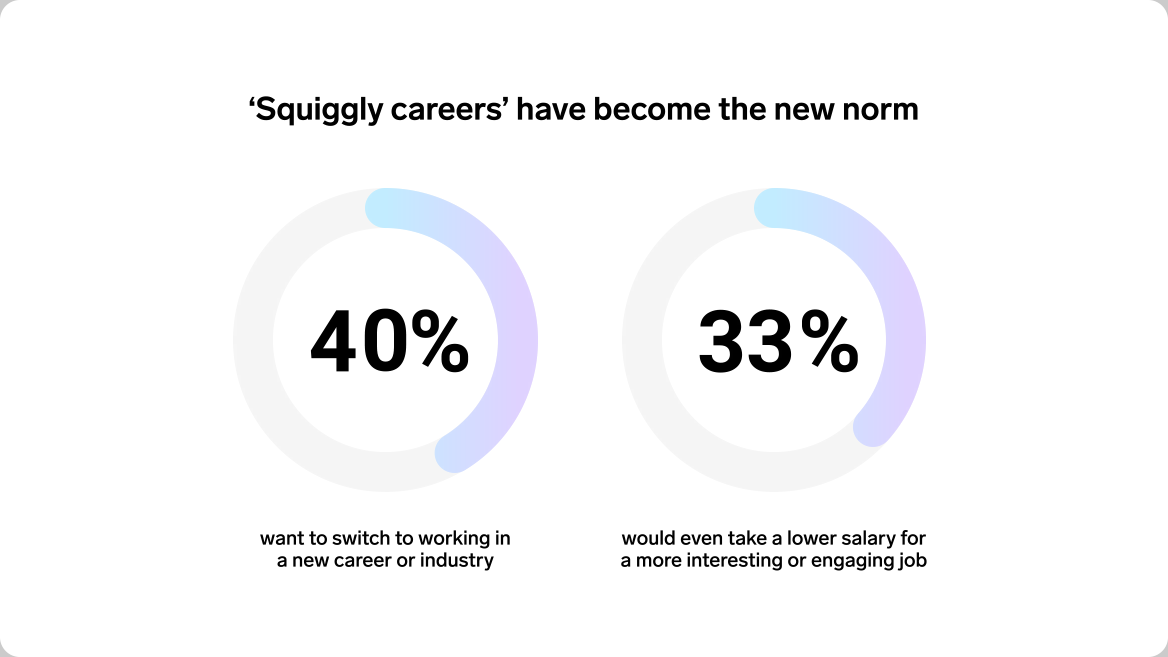
HR teams should, of course, bear this in mind for their retention strategies for the coming year — but they can also think of it as an opportunity for reaching previously untapped talent pools.
We’re seeing an increase in skills-based hiring as organisations focus more on the skills and aptitudes needed for a given role rather than experience.
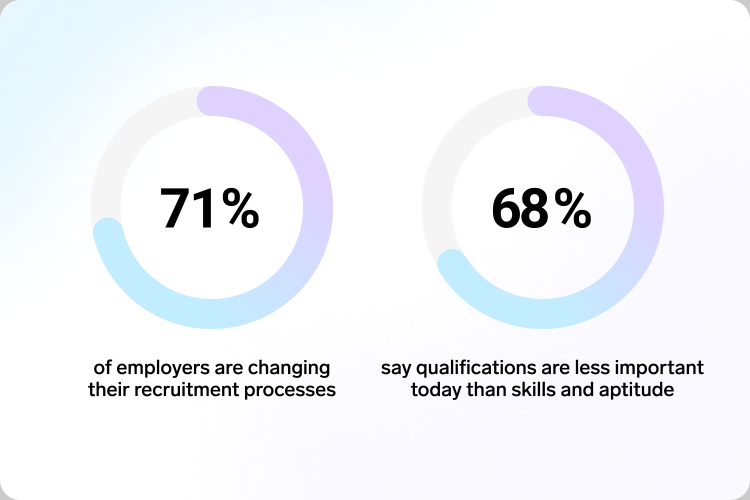
But there’s also an opportunity to think about internal job hopping as a benefit to your organisation as employees seek variety and continual development in their careers.
Organisations often rely on external hires to come in and question processes with fresh perspectives, but that same benefit can come from internal colleagues — and focussing on this could help speed up execution as these colleagues will also have valuable institutional knowledge to give them a head start.
They may also create opportunities for those around them to learn from their previous experience, creating positive momentum in their new team.
Workforce productivity is holding businesses back
Workforce productivity remains one of the most important challenges employers face. Nearly a quarter (23%) of employers surveyed say low productivity is a potential barrier to their organisation’s success, and 29% identify improving productivity as a key people challenge they need to address in the next 12 months.
Our research reveals a strong correlation between trust, psychological safety, and employee productivity. By creating a supportive environment that prioritises work-life balance and offers opportunities for growth, organisations can boost employee engagement and performance.
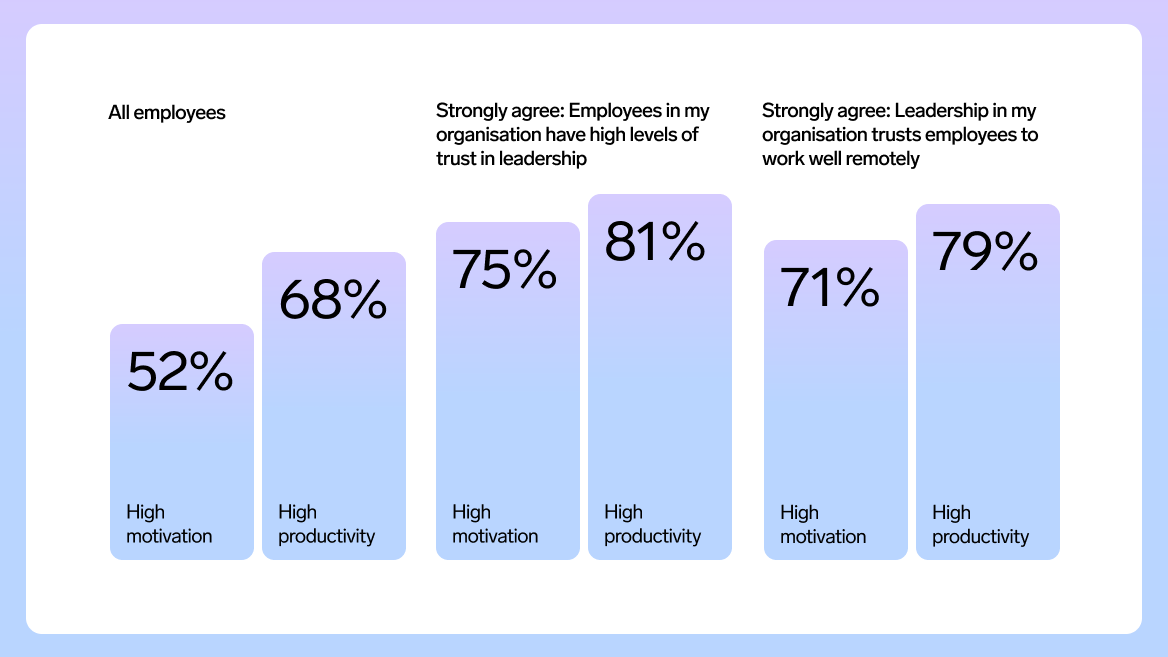
Keeping top performers on board is essential
High performers are the lifeblood of any organisation. And our research shows that, overwhelmingly (95%), these individuals believe there are actionable steps companies can take to keep them on board. The challenge lies in identifying who these top performers actually are.
While it's not always straightforward, there are effective methods to pinpoint the individuals truly driving your organisation forward. The precise criteria will differ for each organisation, but, essentially, top performers excel in two key areas: delivering results and aligning with your company culture and values.
To identify these high-flyers, start by analysing your performance cycles. Successful new hires can also provide valuable insights into the qualities your top performers possess. However, to get a truly accurate picture, ensure performance evaluations are consistent across the board.
It's crucial to gather feedback from multiple sources beyond just the manager. Input from peers and colleagues can offer a comprehensive view of an employee's contributions to the overall company culture.
By understanding what exceptional performance looks like, you can clearly communicate these expectations to the entire organisation, encouraging employees to incorporate these behaviours and goals into their development plans.
To maximise the impact of your top performers, turn them into role models for others. By showcasing their successes, you can inspire and motivate your workforce to reach new heights.
The year ahead
The year ahead will be characterised by rapid change, increased competition for talent, and evolving employee expectations. Organisations that can adapt to these trends will emerge successful.
And HR leaders will play a pivotal role in driving this transformation by prioritising employee experience, fostering a culture of trust, and leveraging data-driven insights. The full Workforce Pulse report goes deeper on specific challenges and how organisations can meet them. You can find it here.
Are you ready to transform your HR function? Speak with an expert today to learn how Personio can help you navigate the changing talent landscape.
